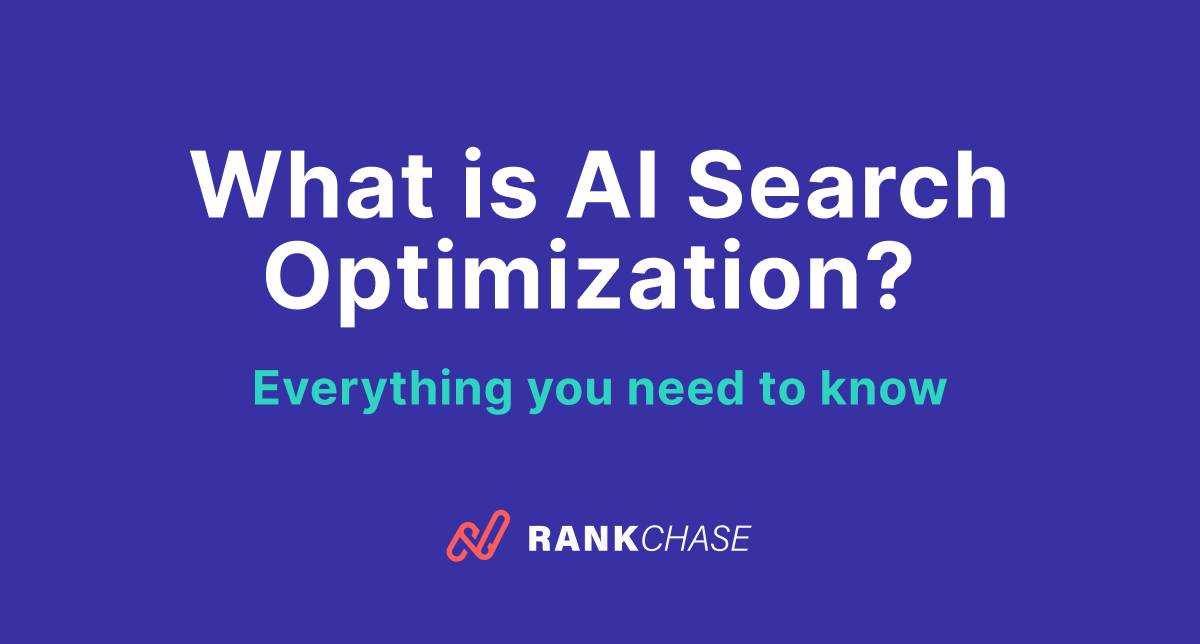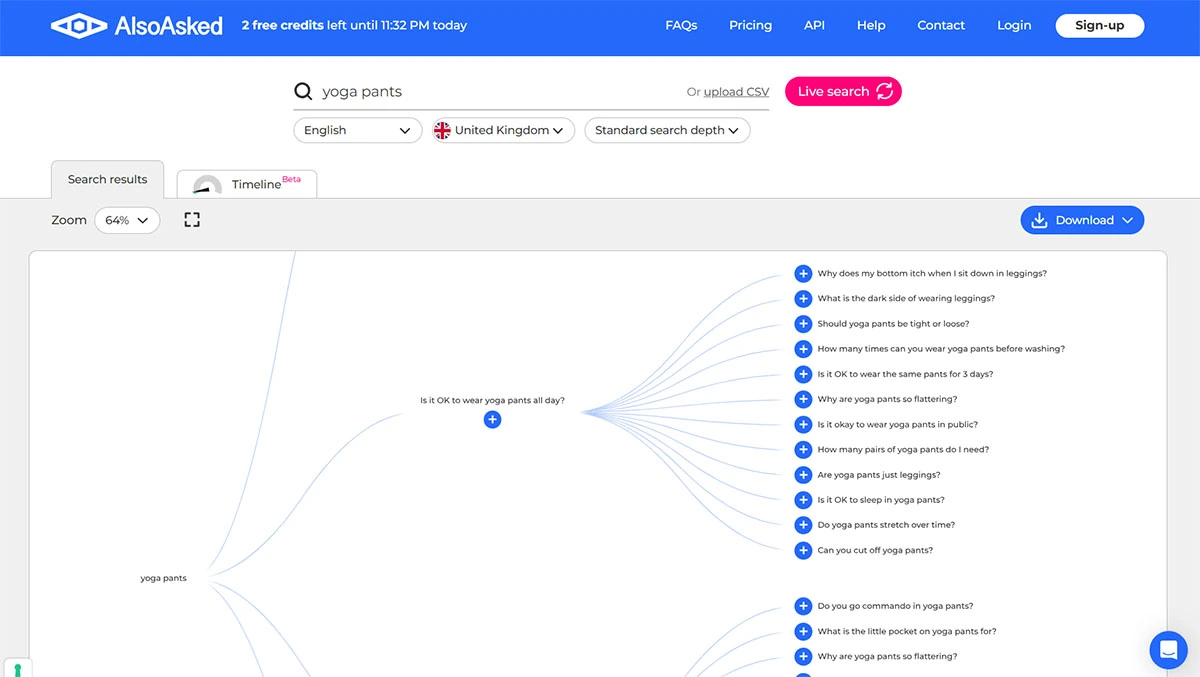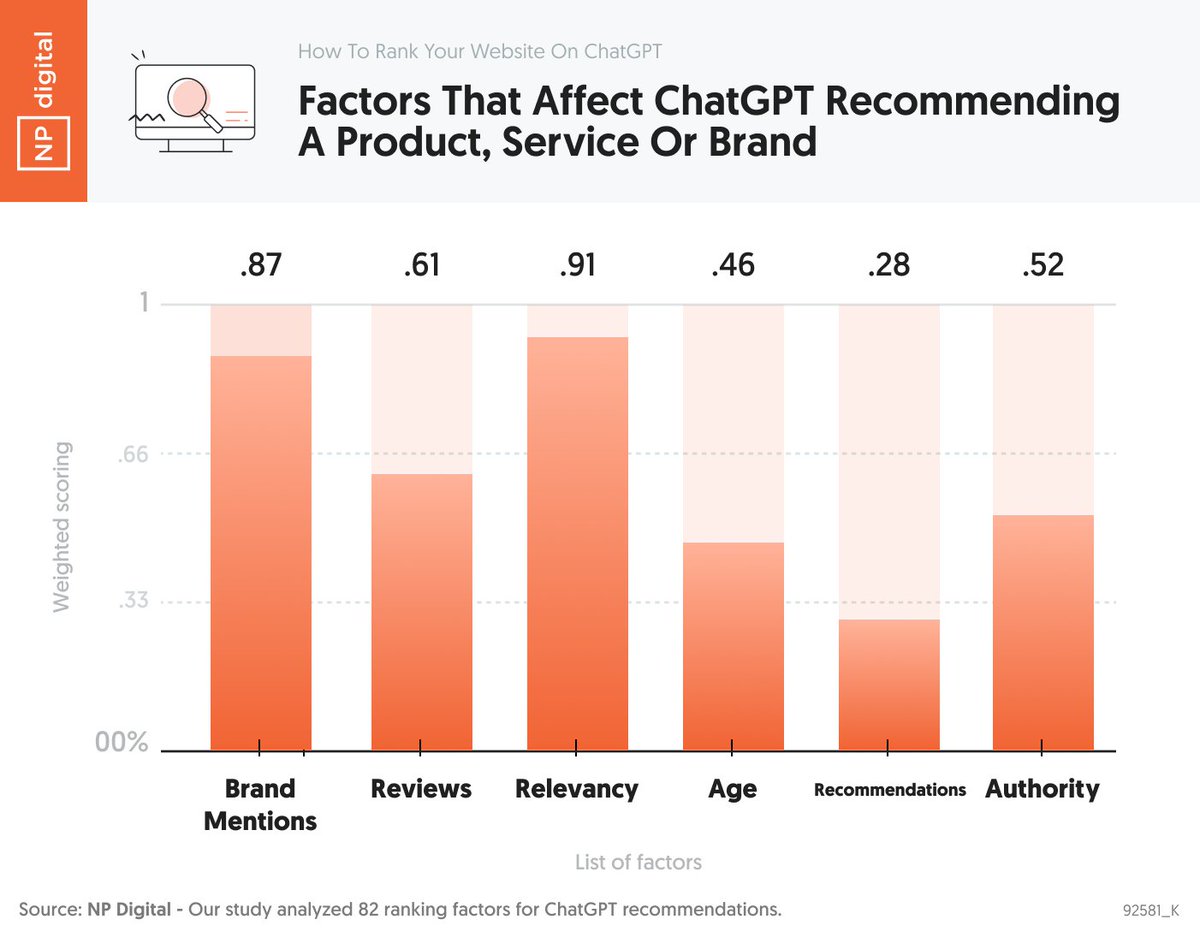BLOG ARTICLE
What is AI Search Optimization? - GEO, LLMO, AEO
Last updated: 4/13/2025
Last updated: 4/13/2025
What’s AI SEO, and why does it matter? Generative Engine Optimization (GEO) is transforming how marketers and content creators approach digital visibility in a world driven by artificial intelligence.
GEO is a progression of Search Engine Optimization (SEO), with a focus on creating content that AI tools like ChatGPT, Grok, Perplexity, and other large language models (LLMs) can reference to provide accurate, detailed answers to user queries.
While traditional SEO emphasized ranking through keywords and backlinks, GEO centers on building trust and delivering relevance within AI-generated responses.
If you're looking to learn how to optimize your content for AI search engines, check out our article where we discuss the best science-based methods to ensure your website gets noticed by AI.
But first, let's dive into what AI search optimization and how you can adapt in 2025.

SEO vs. AI Search Optimization (GEO): What’s the Difference?
SEO has been the backbone of digital marketing for decades.
It’s what helps your website rank higher in search engines like Google. From targeting the right keywords to building backlinks, SEO is all about visibility.
AI SEO, and more specifically GEO, takes a different approach.
Instead of aiming for a top spot on a search results page, you’re optimizing your content to be referenced and synthesized by AI models like ChatGPT, Perplexity, and Grok.
These tools don’t rank content in a traditional sense—they recommend brands or sites based on the information they gather from across the web andsynthesize information to deliver a concise, accurate response.
This changes the game because your content now needs to:
- Address specific user questions and intent.
- Be well-structured so AI can process it effectively.
- Your brand needs to be recognizable as an authority.
Traditional SEO typically focused on optimizing specific keywords or broad topics. GEO, however, takes a smarter approach by rewarding clarity, depth, and relevance.
In fact, according to a study from Princeton University, keyword stuffing has actually made content perform 10% worse on platforms like Perplexity.
For instance, while traditional SEO strategies might focus on boosting your blog’s visibility for high-traffic keywords like "best running shoes," GEO is tailored to enhance responses to more specific questions such as, "What are the best running shoes for beginners?"
This makes your content align more closely with detailed user inquiries, potentially increasing its relevance and visibility in AI-driven search results.
For a more in depth comparison between SEO and GEO checkout this article.
How to optimize for AI search?
Antecipate follow up questions
Large Language Models (LLMs) like ChatGPT rely on a conversational flow rather than static search queries.
Users don’t just ask one question; they follow up with specifics.
For example, a user might ask, “What are the best laptops for gaming?” and then follow with, “Which ones have good battery life?”
To optimize for conversational search:
- Break content into logical sections: Use headers and subheaders that align with user intent. For instance, an article about gaming laptops should have sections like “Top Laptops for Battery Life” and “Best Budget Gaming Laptops.” This structure allows LLMs to easily extract targeted answers.
- Incorporate FAQs: Create a section answering likely follow-up questions. For example, include, “Do gaming laptops work for video editing?” or “How much RAM is enough for gaming?”
- Contextual relevance: Ensure each part of your content ties back to the main topic. If your article is about gaming laptops, avoid tangents like general laptop maintenance.
Focus on Prompts and not keywords
Prompts are the new keywords in AI SEO.
Instead of simple phrases like “best running shoes,” users now ask detailed, specific questions such as, “What are the best trail running shoes for beginners with high arches?”
Here’s how to optimize for prompts:
- Target long-tail queries: We like to use AlsoAsked, or search engine autocomplete to identify questions people are asking on the internet. Write content that addresses these directly.
- Provide context-rich answers: For a query about trail running shoes, include specifics like terrain compatibility, cushioning, and comparisons between top brands. AI values in-depth content over generic answers.
- Include actionable recommendations: Don’t just describe; recommend. For example, “For beginners with high arches, Brand X offers excellent support and durability.”

AI tools favor content that goes beyond answering the question—it solves the user’s problem with clarity and depth.
Brand Mentions
One key difference between traditional SEO and AI SEO is the importance of brand mentions. LLMs favor brands that are frequently and consistently mentioned online.

To boost your brand’s presence:
- Social proof: Actively encourage customers to share reviews or testimonials on platforms like Trustpilot, Google Reviews, or even social media. The more your brand is talked about, the more AI recognizes it.
- Collaborate for visibility: Partner with well-known influencers or bloggers in your industry to increase mentions. For instance, a fitness equipment brand might work with fitness influencers to showcase their products. Also consider digital PR to get mentioned on well regarded news websites.
- Repurpose content: Maximize the reach of your existing content by adapting it for different platforms. For example, turn a blog post into a LinkedIn article, create short videos summarizing key points for Instagram, or develop infographics for Pinterest. This not only increases visibility but ensures your brand appears consistently across multiple channels.
The more frequently your brand appears in trusted contexts, the more likely AI tools will include it in their responses.
Coherence
Consistency across all your digital channels is essential. Inconsistencies in messaging confuse both users and LLMs, reducing your authority.
How to ensure coherence:
- Unified messaging: Align your tone and messaging across your website, blog, and social media. For example, if sustainability is a core brand value, emphasize it everywhere.
- Update outdated content: Regularly review your website and other platforms to ensure messaging reflects current priorities and offerings. Outdated information can harm your credibility.
- Centralize brand guidelines: Create a clear guide for tone, style, and messaging to ensure consistency across all platforms and team members.
When your brand narrative is clear and consistent, LLMs can identify and recommend you with confidence.
Backlinks
Backlinks, while traditionally crucial for SEO by enhancing Google rankings, now play a dual role in the era of AI search results, as highlighted by a Seer Interactive study.
This research reveals that while backlinks alone don’t directly influence AI selections, they are essential for achieving high Google rankings.
And simply appearing on the first page of Google—not necessarily in the top positions—still maintains a strong correlation with the likelihood of being cited by AI in its responses.
How to build effective backlinks:
- Create link-worthy assets: Publish unique research, data reports, or in-depth guides that others will naturally want to reference. For example, an e-commerce site might share annual insights on shopping trends.
- Pitch to high-authority sites: Reach out to reputable blogs or industry publications offering guest posts or collaborating on content. This helps establish your site as an authoritative source.
- Capitalize on PR opportunities: If your brand does something noteworthy, like launching a groundbreaking product, issue press releases to relevant media outlets.
Checkout this article on how to get backlinks where we cover the best strategies to build a solid backlink profile.
While this overlaps with traditional SEO, the stakes are higher in AI SEO, where trustworthiness determines inclusion in AI responses.
The shift is from attracting clicks to becoming part of the AI’s knowledge base.
Comparing AEO, GEO, LLMO, and SEO
AI SEO is a relatively new concept, and it comes with its own set of terms and acronyms. If you’re feeling a little overwhelmed by AEO, GEO, LLMO, and SEO, you’re not alone. Let’s break them down so they make sense:
- SEO (Search Engine Optimization): This is the traditional practice of optimizing content to rank higher in search engines like Google or Bing. It focuses on things like keywords, backlinks, and user experience to increase visibility in search engine results pages (SERPs).
- AEO (Answer Engine Optimization): AEO takes SEO a step further by optimizing content for voice search and direct answers. Think about how platforms like Alexa, Siri, or Google Assistant answer questions. With AEO, the goal is to have your content serve as the answer to these spoken queries.
- GEO (Generative Engine Optimization): GEO is about preparing your content to be recognized and synthesized by AI tools like ChatGPT or Perplexity. Unlike traditional SEO, which aims to rank pages on search engine results, GEO ensures that your content becomes part of the AI-generated answers during user interactions with these tools. It’s about optimizing for how AI retrieves and integrates internet-based data into its responses, making it crucial for AI-driven searches.
- LLMO (Large Language Model Optimization): LLMO, on the other hand, focuses specifically on optimizing content to align with the training data and frameworks of large language models like ChatGPT and Bard. While GEO is about making content suitable for AI-powered search and retrieval processes, LLMO dives deeper into ensuring that the content fits within the datasets and contexts that these language models use to generate their outputs.
How Are They Connected?
These acronyms might seem like separate strategies, but they overlap in many ways. SEO is the foundation—it’s where content optimization began. AEO builds on it by targeting voice search, while GEO and LLMO push optimization into the AI-powered future.
Here’s the key distinction: GEO and AEO focuses on optimizing for how AI retrieves and integrates web-based information into synthesized search results. LLMO focuses on aligning content with the nuances of how large language models interpret and process information within their datasets.
GEO ensures that your content gets found and used by AI search tools.
LLMO ensures that your content aligns with the underlying logic of the models themselves. Together, they’re shaping the new era of digital marketing.
Will AI Take Over SEO?
This is a common question—and an important one. Will AI render traditional SEO obsolete?
The short answer: no, but it’s evolving fast. SEO isn’t going away, but it’s no longer the sole focus for digital marketers. AI is transforming how people search and interact with information. Instead of browsing through a list of links, many users now ask AI for instant, concise answers.
In a September 2024 survey, 8% of U.S. respondents reported using ChatGPT as their primary search engine, up from 1% in June of the same year
For businesses, it means adapting to a world where AI doesn’t just deliver answers—it determines which brands, products, or services to highlight. Companies that embrace this shift will stay relevant. Those that don’t risk losing visibility altogether.
The Future of GEO and SEO
GEO isn’t here to replace SEO; it’s here to complement and expand it. Here’s what the future holds:
- Content Quality Will Reign Supreme: AI prioritizes detailed, accurate, and authoritative content. Thin or generic content won’t make the cut anymore. Brands will need to invest in creating in-depth, context-rich resources that genuinely help users.
- Structured Data Will Be Non-Negotiable: Schema markup and metadata will play a huge role in helping AI understand and utilize your content. The clearer and more organized your data, the more likely it will be featured in AI-generated answers.
- Emerging Platforms Will Reshape Search: GEO is already influencing AI-powered tools like chatbots, virtual assistants, and voice-activated devices. As these platforms grow, businesses will need to adapt their strategies to stay visible.
- AI Tools Will Favor Authority and Mentions: The more your brand is recognized online—through backlinks, reviews, and social media mentions—the more likely AI tools will include you in their responses. Building trust and credibility will be more important than ever.
To stay competitive, you’ll need to focus on creating high-quality content, building authority, and ensuring your brand is present in the conversations happening online.
GEO, LLMO, and other AI-focused strategies represent the next frontier of digital marketing—and they’re already shaping the way people find information.